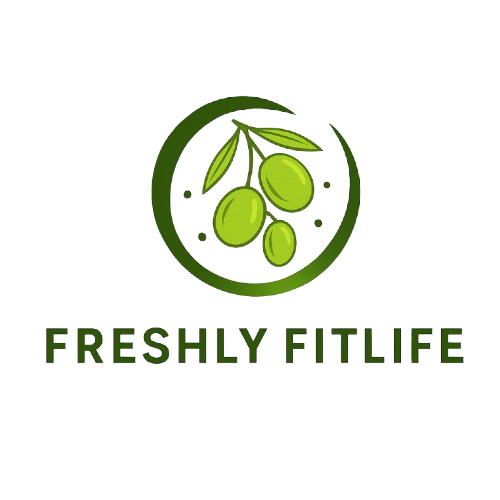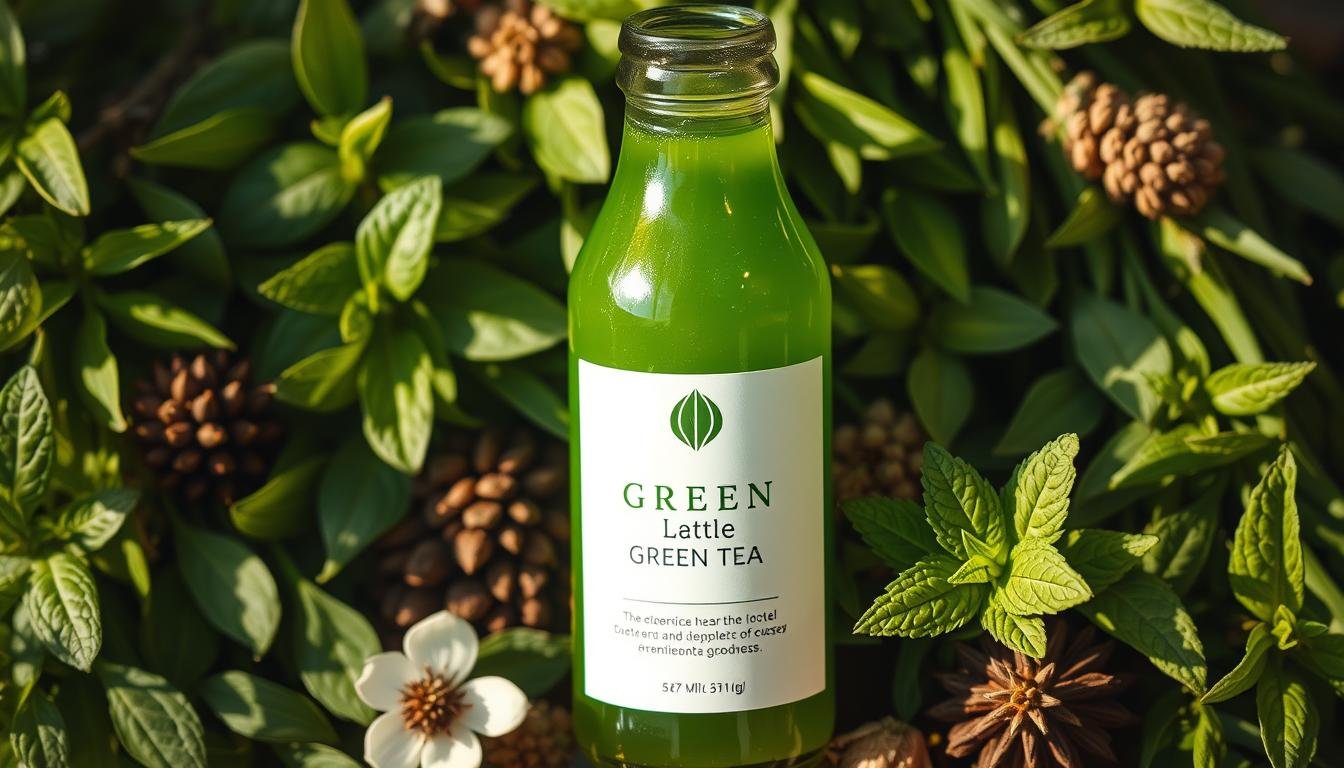Grab-and-go drinks flood store shelves, promising quick health benefits with every sip. But does bottled green tea live up to the hype, or is it just clever marketing?
Many love the convenience of pre-packaged drinks. Yet, hidden sugars and lower antioxidant levels often lurk inside. Freshly brewed leaves pack more nutrients, but busy lifestyles make bottled versions tempting.
The FDA approves extracts for medicinal use, yet store-bought versions differ greatly. Catechins like EGCG offer perks, but processing strips some away. Let’s explore what really goes into that portable bottle—and whether it deserves a spot in your diet.
Key Takeaways
- Bottled versions often contain added sugars, reducing their nutritional value
- Freshly brewed tea retains more antioxidants like EGCG
- Processing methods affect catechin levels in packaged drinks
- FDA-approved extracts differ from commercial bottled products
- Environmental impact varies between single-use bottles and loose-leaf brewing
Introduction: Understanding Bottled Green Tea
Consumers increasingly swap sodas for beverages marketed as functional. The global market for these drinks grows yearly, fueled by perceived wellness advantages. But convenience often masks nutritional trade-offs.
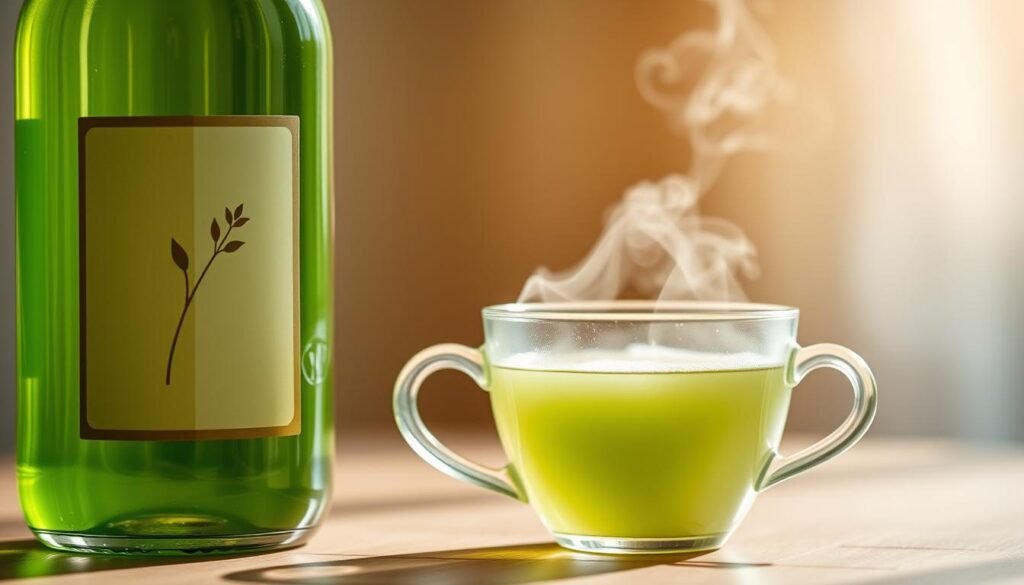
Many assume pre-packaged options match homemade brews. A 2023 Cleveland Clinic study notes 24% lower stroke risk with daily green tea consumption. Yet, processing methods dilute some advantages found in loose-leaf versions.
Ready-to-drink varieties cater to busy routines. Labels tout antioxidants like EGCG, but heat treatment during bottling reduces potency. Experts debate whether the ease outweighs lost nutrients.
Regular drinking green tea supports metabolism and heart health. However, added sweeteners in bottled types can offset these perks. Always check labels for hidden sugars.
Later sections will explore EGCG levels in detail. For now, remember: not all health benefits survive the journey from leaf to shelf.
What Is Bottled Green Tea?
The journey from leaf to bottle changes the drink’s natural properties significantly. Unlike home-steeped cups, mass-produced versions undergo pasteurization, stripping 20% of polyphenols according to Signos research. Yet, matcha-based options preserve more nutrients, as noted by the Cleveland Clinic.

How It’s Made
Industrial brewing heats camellia sinensis leaves at high temperatures for shelf stability. This differs from traditional steeping, which preserves delicate antioxidants like EGCG. Common additives include:
- Citric acid – Enhances tartness but may alter pH balance
- Ascorbic acid – Added to mimic fresh flavor
- Potassium sorbate – Extends shelf life
Types of Bottled Green Tea
Options range from unsweetened to flavored blends. Premium Japanese brands use shade-grown tencha leaves for richer taste. Below, a comparison of popular varieties:
| Type | Key Features | Nutrient Retention |
|---|---|---|
| Unsweetened | No added sugars, minimal additives | Moderate (pasteurization reduces EGCG) |
| Honey-Infused | Natural sweetness, higher calories | Low (heat affects honey enzymes) |
| Matcha Blends | Powdered leaves, vibrant color | High (retains more catechins) |
While matcha blends offer better nutrient profiles, always check labels. Some tea contains hidden sweeteners or artificial flavors. Opt for brands listing fewer ingredients for a cleaner sip.
Nutritional Content of Bottled Green Tea
Nutrition labels reveal surprising differences between bottled varieties. Unsweetened options may have under 3 calories, while sweetened versions pack up to 30g of sugar—equal to a candy bar. Always check the fine print.
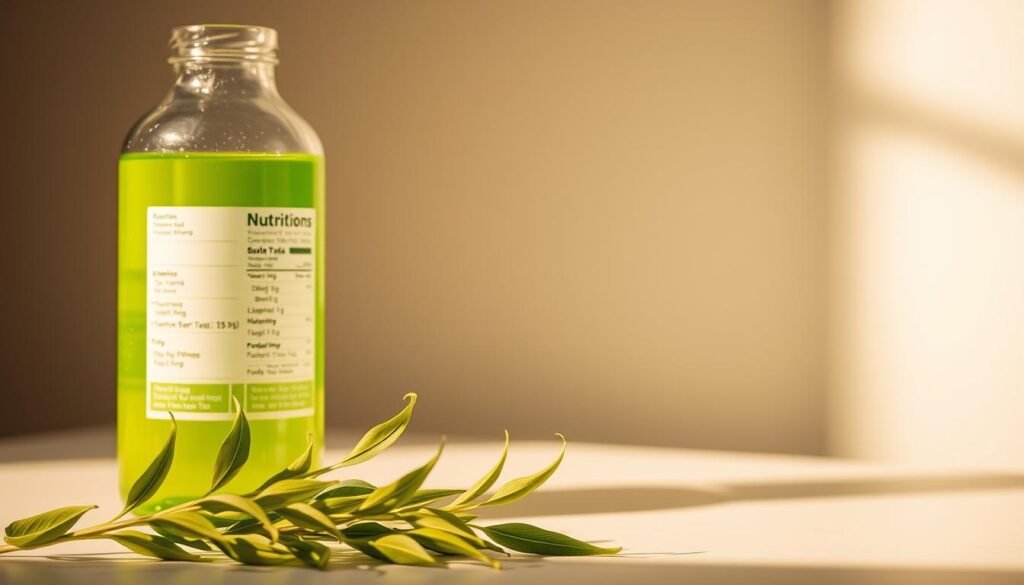
Calories and Sugar Content
Ito En’s unsweetened blend keeps it simple with zero added sugars. In contrast, Arizona’s “lightly sweetened” label hides 15g per serving. The American Heart Association recommends no more than 25g daily for women.
Watch for these terms on labels:
- Evaporated cane juice – Fancy wording for sugar
- Organic agave – Still spikes blood sugar
- Natural flavors – Often mask sweeteners
Key Nutrients and Antioxidants
Even processed drinks retain some health benefits. L-theanine (20mg per serving) promotes focus, while trace manganese supports bone health. But catechin levels drop 40% compared to fresh cups green tea.
| Brand | EGCG (mg) | Added Sugars | Vitamin C |
|---|---|---|---|
| Ito En Unsweetened | 45 | 0g | No |
| Arizona Green Tea | 12 | 15g | Yes (10% DV) |
| Matcha Love | 60 | 5g | No |
A 2022 study found plastic bottles reduce catechin retention by 22%. Opt for brands with minimal additives to maximize what tea contains naturally.
Health Benefits of Bottled Green Tea
Portable tea options offer convenience but may sacrifice some nutritional perks. While they retain some health benefits, processing often lowers antioxidant levels compared to fresh brews. Here’s what research says about their potential advantages.
![]()
Antioxidant Properties and Catechins
EGCG, a potent catechin, fights oxidative stress but varies widely by brand. A typical bottle contains 50mg, while homemade versions pack 150mg. Decaffeinated options still provide quercetin, which supports immunity.
| Brand | EGCG (mg per serving) | Key Feature |
|---|---|---|
| Ito En | 45 | Unsweetened, high polyphenols |
| Arizona | 12 | Added sugars, lower potency |
| Matcha Love | 60 | Powdered leaves, richer flavor |
Potential Weight Management Benefits
A Korean study found women drinking four servings weekly reduce risk of abdominal fat accumulation. However, the FDA warns against exaggerated weight loss claims—added sugars in sweetened varieties can counteract these effects.
Heart Health and Cholesterol
Regular consumption may lower LDL cholesterol by 5–6%, per Cleveland Clinic research. A 2023 meta-analysis linked three daily servings to an 18% drop in hypertension risk. Opt for unsweetened types to maximize cardiovascular perks.
“While convenient, bottled versions shouldn’t replace freshly brewed tea for those seeking optimal health benefits.”
Is Bottled Green Tea Healthy Compared to Brewed Green Tea?
Not all pre-packaged drinks deliver the same benefits as their fresh counterparts. While convenient, bottled versions often lose nutrients during processing. Let’s explore how they stack up against home-brewed green tea.
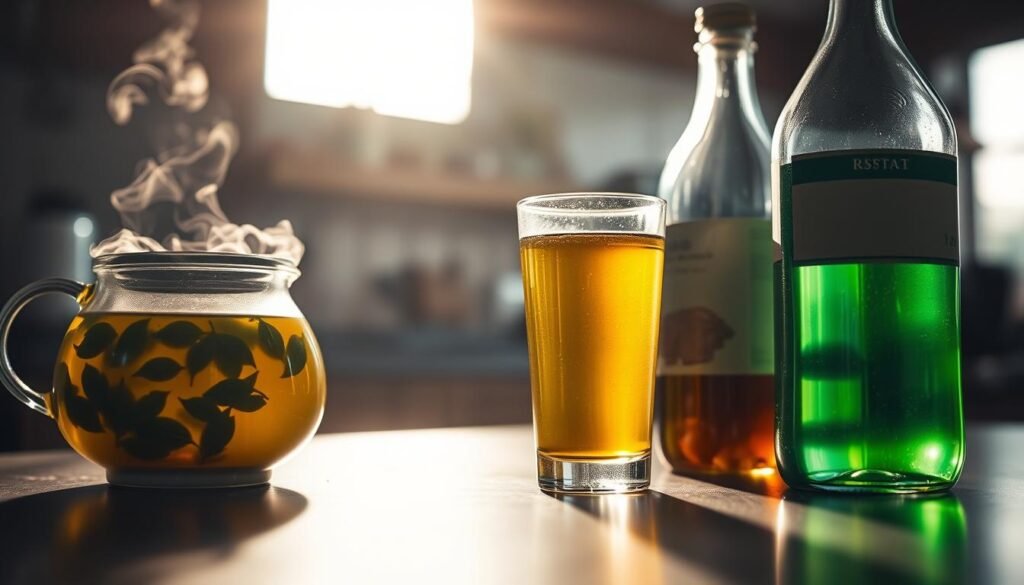
Nutrient Retention in Bottled vs. Fresh
USDA data shows brewed cups green tea retain 150mg of EGCG, a powerful antioxidant. Bottled types average just 50mg due to pasteurization. Cold-brewed options preserve 15% more polyphenols than heat-treated ones, per Signos research.
| Type | EGCG (mg) | Polyphenol Retention |
|---|---|---|
| Freshly Brewed | 150 | High (no processing) |
| Cold-Brewed Bottled | 75 | Moderate (15% loss) |
| Heat-Pasteurized | 50 | Low (40% loss) |
Added Ingredients and Preservatives
Labels listing “natural flavors” tea may hide corn syrup solids. Plastic bottles risk BPA leaching, especially when exposed to heat. Tetra-pak packaging, used by brands like *Rishi*, better shields antioxidants from light and air.
- Customization: Brewed tea allows adjusting strength and steeping time
- Standardization: Bottled versions offer consistent taste but fixed nutrient levels
- Environmental Impact: Loose-leaf brewing generates less waste than single-use bottles
“For maximum health benefits, freshly brewed leaves outperform bottled alternatives.”
Potential Drawbacks of Bottled Green Tea
Convenience comes at a cost—bottled varieties often hide nutritional pitfalls. While they offer quick hydration, processing and additives can diminish their health value. Let’s unpack the key concerns.

Added Sugars and Artificial Sweeteners
A 500ml sweetened bottle equals nine sugar cubes, per Cleveland Clinic research. Brands like *Snapple* mask sweetness with terms like “natural flavors,” while diet versions may contain aspartame, linked to gut microbiome disruption.
Watch for hidden sugars in:
- Flavored blends: Often pack 15g+ per serving
- “Energy” versions: Boosted with guarana but high in stimulants
Lower Antioxidant Levels
Pasteurization slashes catechin content. A bottled drink averages 25mg EGCG, while loose-leaf sencha offers 130mg. Heat processing degrades polyphenols, reducing potential weight loss and metabolic benefits.
Environmental Impact of Bottling
Plastic bottles contribute to 8M tons of ocean waste yearly (EPA). Each emits 0.6kg CO2—six times more than home-brewed. Opt for BPA-free aluminum cans or Tetra-pak options to cut risk.
“Portability shouldn’t eclipse nutrition or sustainability. Read labels like you’d read a contract.”
Bottled Green Tea vs. Other Beverages
Store shelves overflow with drink options, but how does bottled green tea measure up against popular alternatives? From sodas to energy drinks, each choice impacts hydration, energy, and long-term health differently. Let’s break down the key differences.
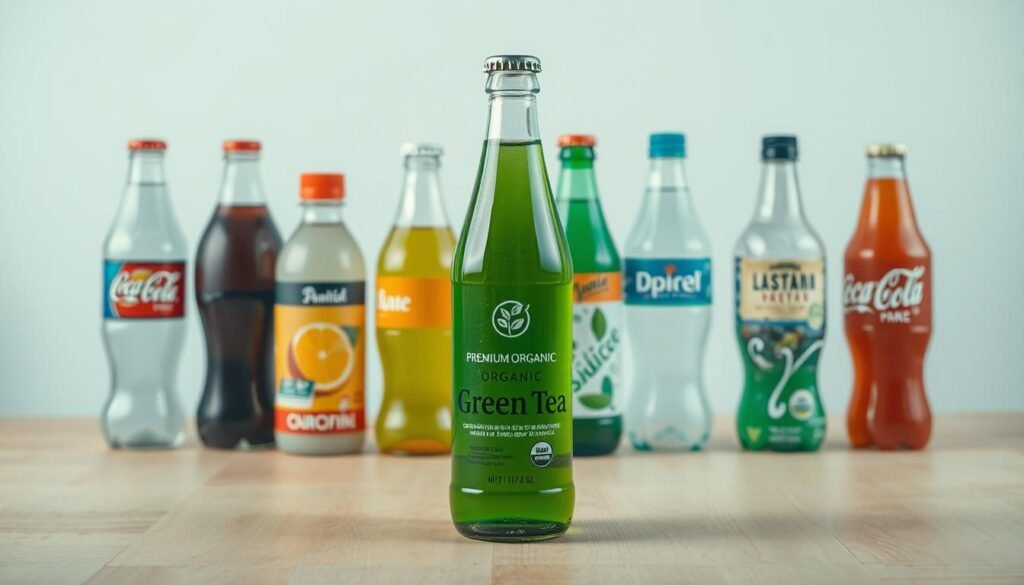
Comparison with Soda and Energy Drinks
Sodas pack 34mg of caffeine per 8oz, slightly more than green tea’s 29mg. But the similarities end there. A can of cola has a pH of 2.5—highly acidic—while green tea sits at a gentler 7.5.
Energy drinks often mix caffeine with synthetic vitamins. Bottled green tea offers natural L-theanine, which balances energy without jitters. Check the ORAC (antioxidant) values:
| Beverage | ORAC Value | Caffeine (mg/8oz) |
|---|---|---|
| Green Tea | 1,253 | 29 |
| Cola | 100 | 34 |
| Energy Drink | 300 | 80 |
How It Stacks Up Against Black Tea
Unlike black tea, which ferments during processing, green tea retains more catechins. A cup of black tea has 48mg caffeine but lacks EGCG’s metabolic perks. Theaflavins in black tea support immunity, while green tea’s polyphenols excel at fighting oxidative stress.
Cost-wise, green tea delivers antioxidants at $0.50 per serving—half the price of acai juice. Watch for imposters: “green tea flavored” drinks may skip actual tea extracts entirely.
“For sustained energy and antioxidants, bottled green tea outperforms sodas but can’t match fresh brews.”
Caffeine Content in Bottled Green Tea
Many reach for portable drinks expecting a gentle energy lift without coffee’s harsh crash. Bottled varieties offer varying caffeine levels that impact focus and rest differently. Understanding these differences helps match your drink choice to daily needs.
Typical Caffeine Amounts
A standard 16oz bottle averages 50mg caffeine—half an espresso shot. Brands differ widely, though. Pure Leaf packs 60mg, while Honest Tea keeps it lighter at 32mg per serving.
Decaf options aren’t completely caffeine-free. They retain about 5mg, which might still affect sensitive individuals. Check labels if you’re monitoring intake closely.
| Brand | Caffeine (mg per 16oz) | L-theanine Content |
|---|---|---|
| Pure Leaf | 60 | Moderate |
| Honest Tea | 32 | High |
| ITO EN Unsweetened | 50 | High |
Energy and Sleep Effects
L-theanine in drinking green varieties smooths out caffeine’s edge. This amino acid promotes calm focus, reducing jitters common with coffee. It’s why many prefer these drinks for sustained productivity.
Timing matters. A Signos study linked afternoon consumption to 27% higher insomnia risk in caffeine-sensitive people. Shift workers might benefit from early evening servings, while others should stop by 2 PM.
- Morning: Ideal for maximizing alertness
- Afternoon: May disrupt sleep if consumed late
- Evening: Opt for decaf if craving flavor
“The L-theanine and caffeine combo offers alertness without anxiety—a rare balance in beverages.”
Who Should Drink Bottled Green Tea?
Certain groups benefit more from pre-packaged tea than others. While convenient, these drinks suit specific lifestyles and health needs better than the general population.
Ideal for On-the-Go Consumers
Athletes appreciate bottled versions for quick polyphenol replenishment post-workout. Brands like *Pure Leaf* offer portable antioxidants without brewing hassle.
Office workers replacing soda cut sugar intake by 20g per serving. The L-theanine in green tea also enhances focus during long meetings.
Who Should Avoid It?
Liver patients must limit intake—Cleveland Clinic notes aluminum content in >3 bottles daily increases risk. Diabetics should skip “zero-sugar” options with maltodextrin, which spikes blood glucose.
Pregnant women need to stay under 200mg caffeine daily. Beta-blocker users may experience reduced medication efficacy, per a Medical News Today study.
| Group | Recommendation | Reason |
|---|---|---|
| Athletes | 1–2 bottles post-exercise | Polyphenol recovery |
| Liver Patients | Avoid >3/day | Aluminum buildup |
| Pregnant Women | Limit to 1 bottle | Caffeine sensitivity |
“Portability meets nutrition—but only for the right people.”
Expert Opinions on Bottled Green Tea
Nutrition experts and researchers weigh in on the pros and cons of pre-packaged options. While convenient, these drinks spark debate about their true nutritional value compared to traditional brewing methods.
Dietitian Recommendations
Registered dietitian Julia Zumpano from the Cleveland Clinic cautions against versions with milk additives. “Dairy proteins bind to antioxidants, reducing absorption by up to 25%,” she explains. The American Diabetes Association suggests limiting sweetened varieties to one bottle daily.
Key professional advice includes:
- Check labels first – Many “lightly sweetened” options contain 4+ teaspoons of sugar
- Prioritize transparency – Choose brands listing actual tea content percentage
- Time consumption wisely – Afternoon intake may affect sleep quality
Scientific Research Findings
A 2025 NIH review of 47 studies showed mixed results for cancer prevention. While some trials noted benefits, others found no significant impact from processed drinks. However, a separate meta-analysis of 1 million participants revealed:
| Benefit | Reduction Rate | Daily Servings Needed |
|---|---|---|
| Cardiovascular Risk | 12% | 3 |
| Type 2 Diabetes | 8% | 2 |
Harvard researchers critique industrial bottling processes, noting up to 60% polyphenol loss. Yet Japanese research links four daily servings to longevity markers. The WHO warns about potential microplastic contamination in plastic-bottled versions.
“For maximum health benefits, freshly brewed leaves outperform processed alternatives. Reserve bottled versions for true convenience needs.”
As Cleveland Clinic experts note, lifestyle changes often provide similar advantages without potential drawbacks. The choice ultimately depends on individual priorities and circumstances.
How to Choose the Healthiest Bottled Green Tea
Navigating supermarket beverage aisles requires savvy label-reading skills. With dozens of options claiming health benefits, the smartest choices come down to ingredient transparency and processing methods.
Decoding Ingredient Lists
Watch for these red flags in small print:
- Carrageenan – A thickening agent linked to gut inflammation
- High-fructose corn syrup – Often listed as “HFCS” or “glucose-fructose”
- “Natural flavors” – Can mask up to 10g added sugars per serving
Ito En Unsweetened tops Signos’ rankings with just three ingredients: water, green tea, and ascorbic acid. Compare this to mainstream brands with 15+ additives.
Top-Rated Brands by Nutritionists
| Brand | Key Advantage | Price Point |
|---|---|---|
| Rishi | USDA Organic, BPA-free cans | $$$ |
| Trader Joe’s | Budget-friendly, no artificial sweeteners | $ |
| Matcha Love | Highest EGCG content (60mg) | $$ |
B Corp certifications indicate ethical sourcing—look for this seal if sustainability matters. These companies audit their supply chains for fair labor practices.
“Refrigerated varieties often preserve more antioxidants than shelf-stable ones. Check ‘keep refrigerated’ labels for maximum nutrient retention.”
For best quality, consume within 48 hours of opening. Unopened, refrigerated bottles maintain freshness for 2 weeks versus 6 months for tetra-paks.
Conclusion: Is Bottled Green Tea a Healthy Choice?
Portable drinks balance convenience with nutritional trade-offs. While they offer quick access to health benefits, fresh brews retain more antioxidants. A 2025 Medical News Today study suggests 2–4 weekly servings maximize perks without sugar risks.
Unsweetened options deliver better value. The Cleveland Clinic recommends staying under eight daily cups to avoid excess caffeine. For optimal results, pair occasional bottled drinks with loose-leaf brewing.
Check labels for EGCG content above 50mg per serving. This ensures you get meaningful polyphenol levels despite processing. Remember: nutrient density matters more than convenience alone.
When chosen wisely, these drinks can complement—not replace—a balanced diet. Prioritize quality brands with minimal additives for the best green tea experience on busy days.
